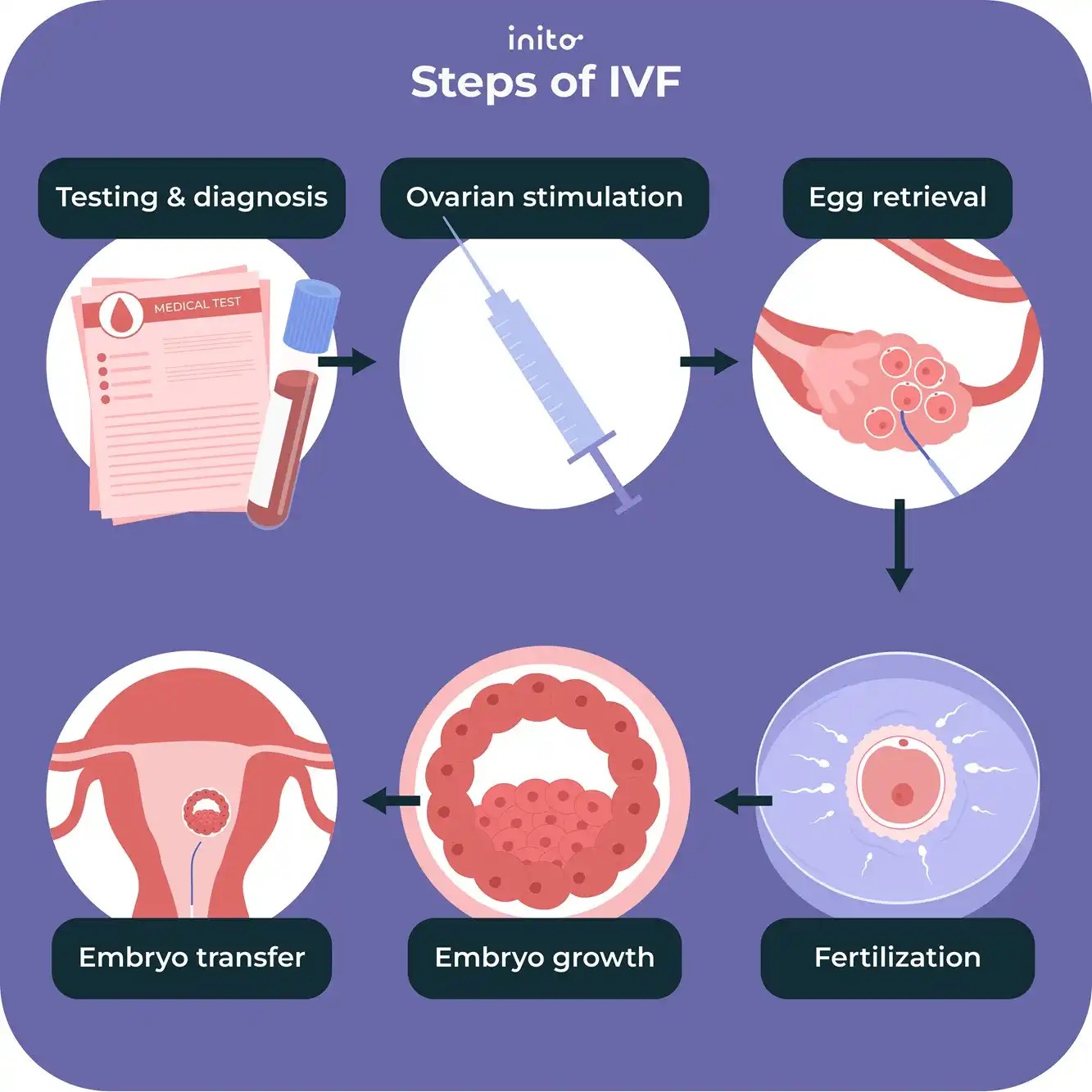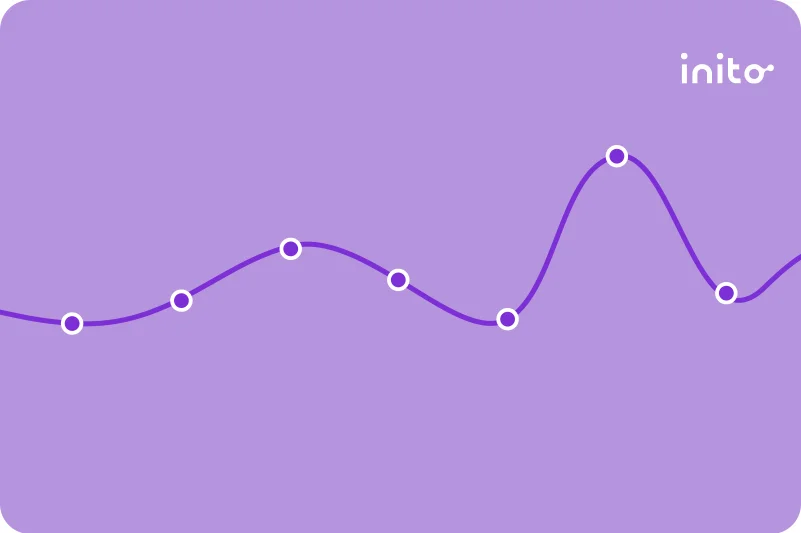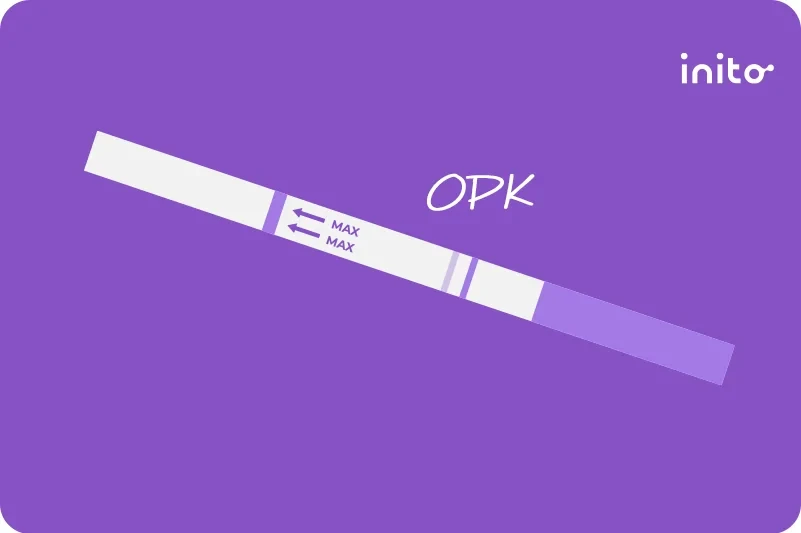Content table
If you’re considering assisted reproductive technology, it’s important to know the difference between IUI vs. IVF.
Let’s briefly cover the basics here. With intrauterine insemination (IUI), prepared sperm is inseminated into the woman’s uterus, but fertilization still occurs inside the woman’s body. With in-vitro fertilization (IVF), eggs are retrieved from the woman, and then the eggs and sperm are fertilized in a lab. Then a healthy developing embryo is placed back inside the woman’s body for implantation.
There’s a lot more to consider when it comes to IUI and IVF though. Keep reading for a better understanding of the procedures, timelines, costs, and risks so you can make the best decision for your unique journey.
What is IUI? A basic overview
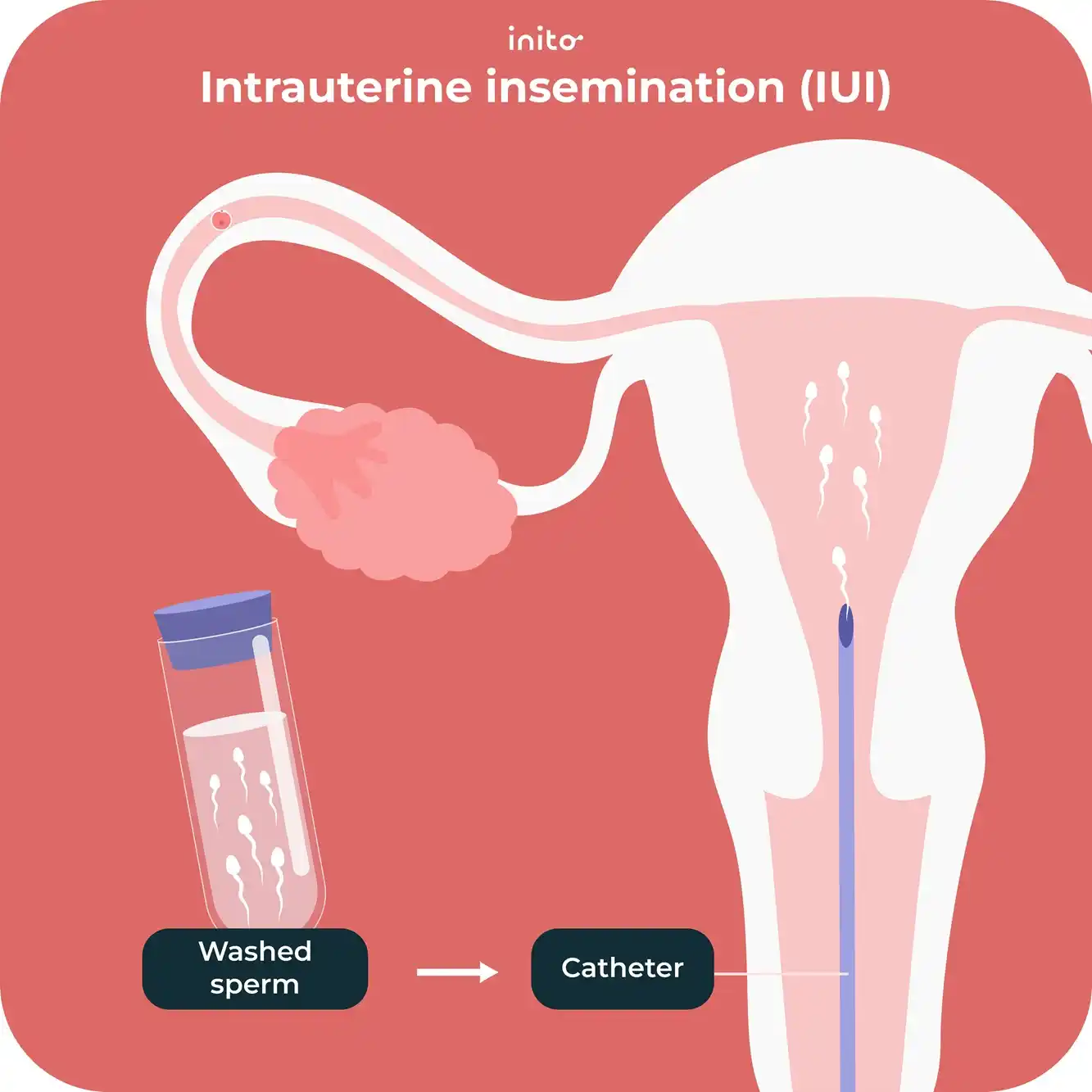
IUI or intrauterine insemination is a type of fertility treatment where sperm is inserted into the upper part of the uterus.
First, the sperm is prepared and cleaned. Then the sperm is inseminated into the woman’s uterus via a catheter. This controlled placement helps sperm enter more easily into the fallopian tube, increasing its likelihood of fertilizing the egg.

As a comparison, in natural conception, millions of sperm are ejaculated and only about 10,000 of those make it to the correct fallopian tube. So IUI drastically reduces the long and tedious journey that sperm need to undertake.
Before insemination, the woman may take certain medications to help induce ovulation. Based on your medical profile, you may take clomiphene, letrozole, and/or gonadotropins.
Like any type of medical treatment, IUI works best for a particular set of circumstances. So let’s keep reading to know who could benefit most from undergoing IUI.
When should you consider IUI as a treatment option?
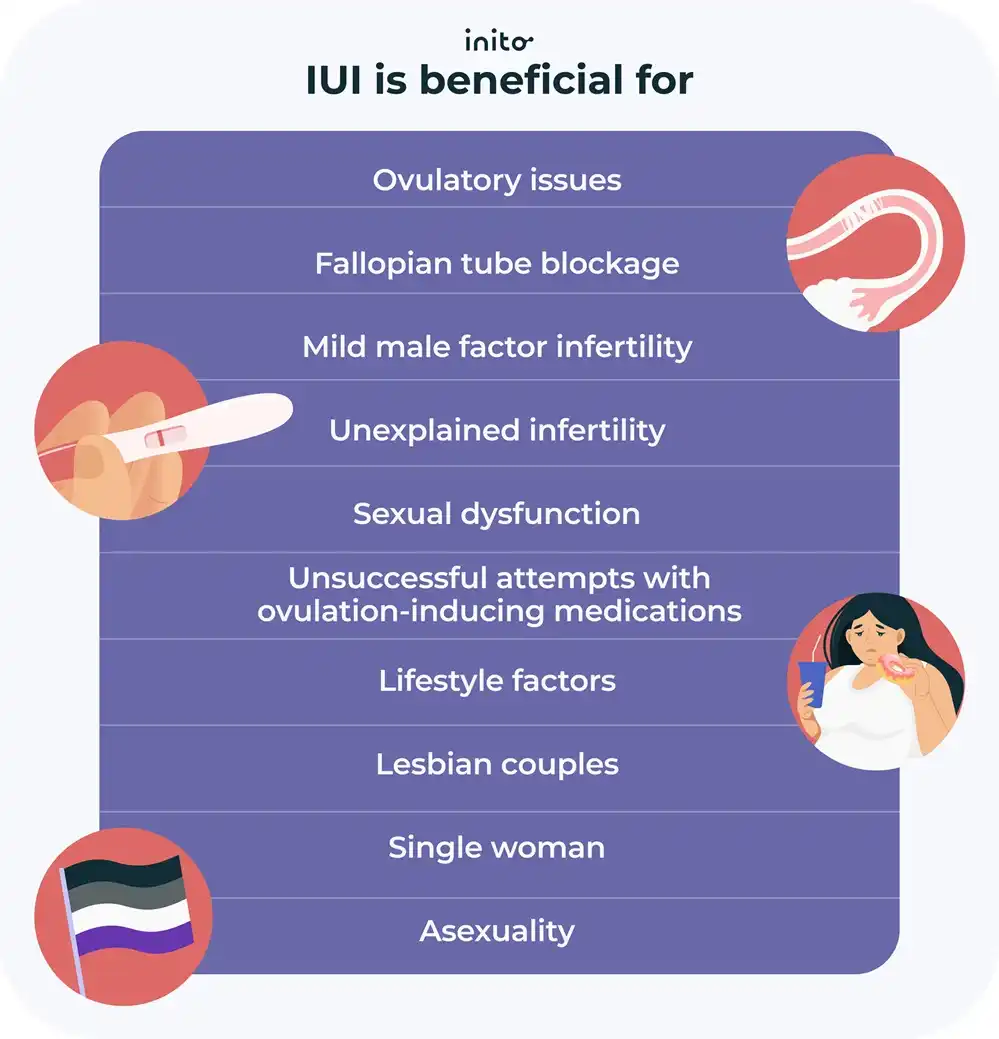
Here are some specific cases for which IUI has been found to be useful:
- Ovulatory issues: This is when there’s an irregularity in the frequency and quality of your ovulation. Polycystic ovary syndrome or PCOS is the most common cause of anovulation.
- Fallopian tube blockage: Tubal factor infertility that involves one fallopian tube could benefit from IUI.
- Mild male factor infertility: This includes having low sperm count or issues with sperm motility.
- Sexual dysfunction: Male sexual dysfunction can include having trouble getting an erection or ejaculating. For females, it could mean vaginismus (which makes penetration challenging due to your vagina muscles contracting involuntarily). Low libido is also sometimes a factor.
- Unexplained infertility: For some couples experiencing infertility that has no official diagnosis, IUI may help.
- Unsuccessful attempts with ovulation-inducing medications: If you’ve previously tried ovulation-inducing medications and still haven’t conceived, IUI is a good next step.
- Lifestyle factors: For couples who have complex schedules that don’t line up well, IUI can help with timing. For example, those who are in the army or travel a lot may turn to IUI.
- Lesbian couples: Same-sex female couples who want to grow their family need donor sperm. This can be done through intrauterine insemination.
- A single woman: Women who wish to bear a child but who have no sexual partner can conceive via IUI.
- Asexuality: A couple who has little to no desire for sexual activity can turn to IUI for conception.
Now that you have a solid understanding of IUI, let’s get into what IVF is and who it may benefit.
What is IVF?
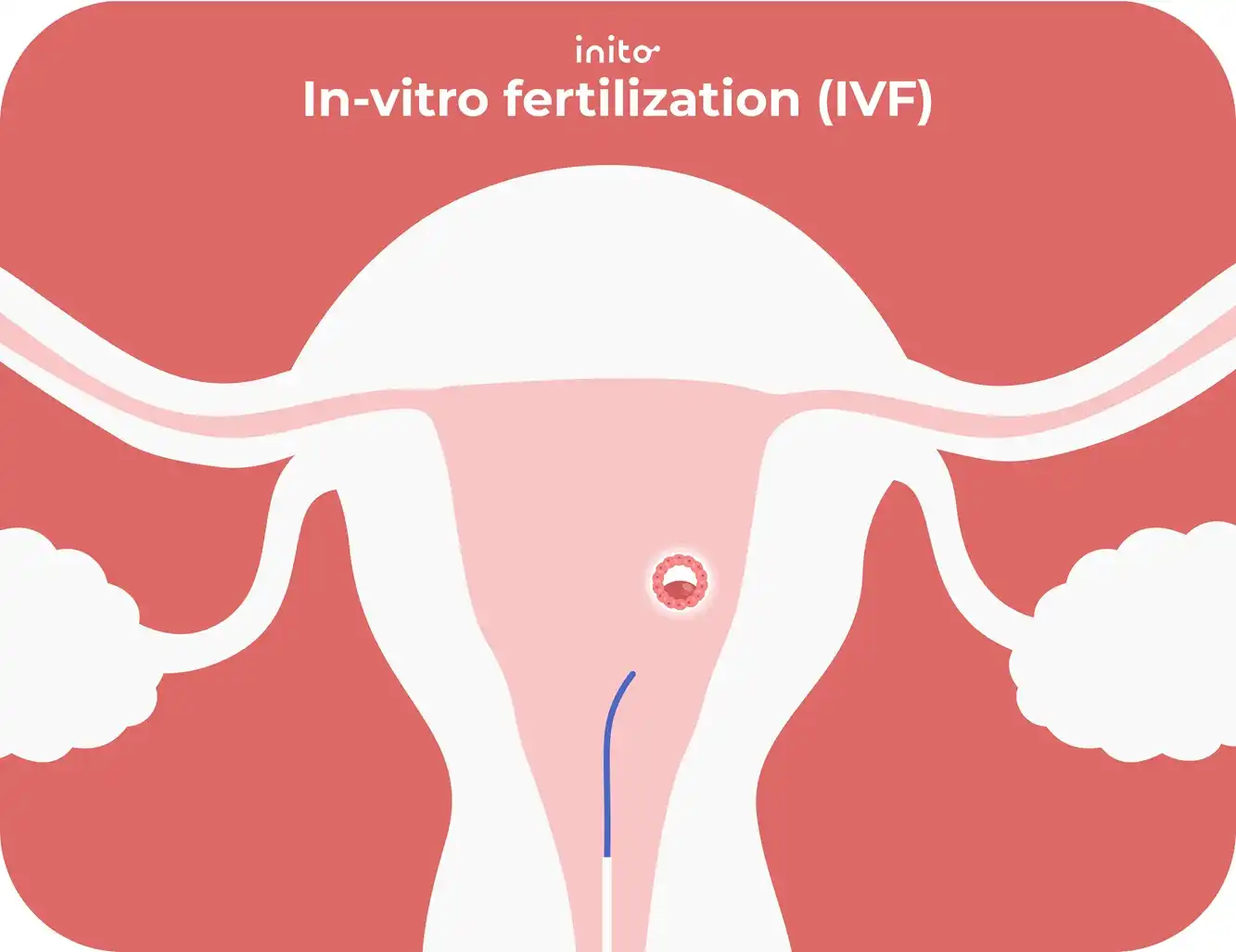
In-vitro fertilization, or IVF, is a more advanced method to treat infertility. When you undergo IVF, the egg and sperm meet in a petri dish as opposed to inside the woman’s body.
After fertilization, the embryo develops under the careful attention of an embryologist. When ready, a catheter is used to transfer the embryo (or embryos) inside the uterus. Then it’s the job of the embryo to successfully implant into the uterine lining. This is when the pregnancy officially begins!
Since IVF is a more involved treatment, let’s break it down step by step:
Ovarian stimulation
The first step of IVF is taking injectable medication to stimulate follicle growth. In a normal cycle, your body only releases one mature egg. But these medications help you produce multiple eggs in the same menstrual cycle.
Egg retrieval
While you’re sedated, a doctor will perform a procedure to collect the mature eggs from your ovaries. This procedure is minimally invasive and takes approximately half an hour.
Fertilization
After retrieval, the sperm and egg are placed together to begin the fertilization process. Depending on your treatment plan, the sperm can be provided by either your partner or a sperm donor.
If severe male infertility is at play, a procedure called ICSI can be performed. ICSI stands for intracytoplasmic sperm injection. In an IVF with an ICSI cycle, a single healthy sperm is injected straight into the egg. This gives the sperm the best chance at successfully fertilizing the egg.
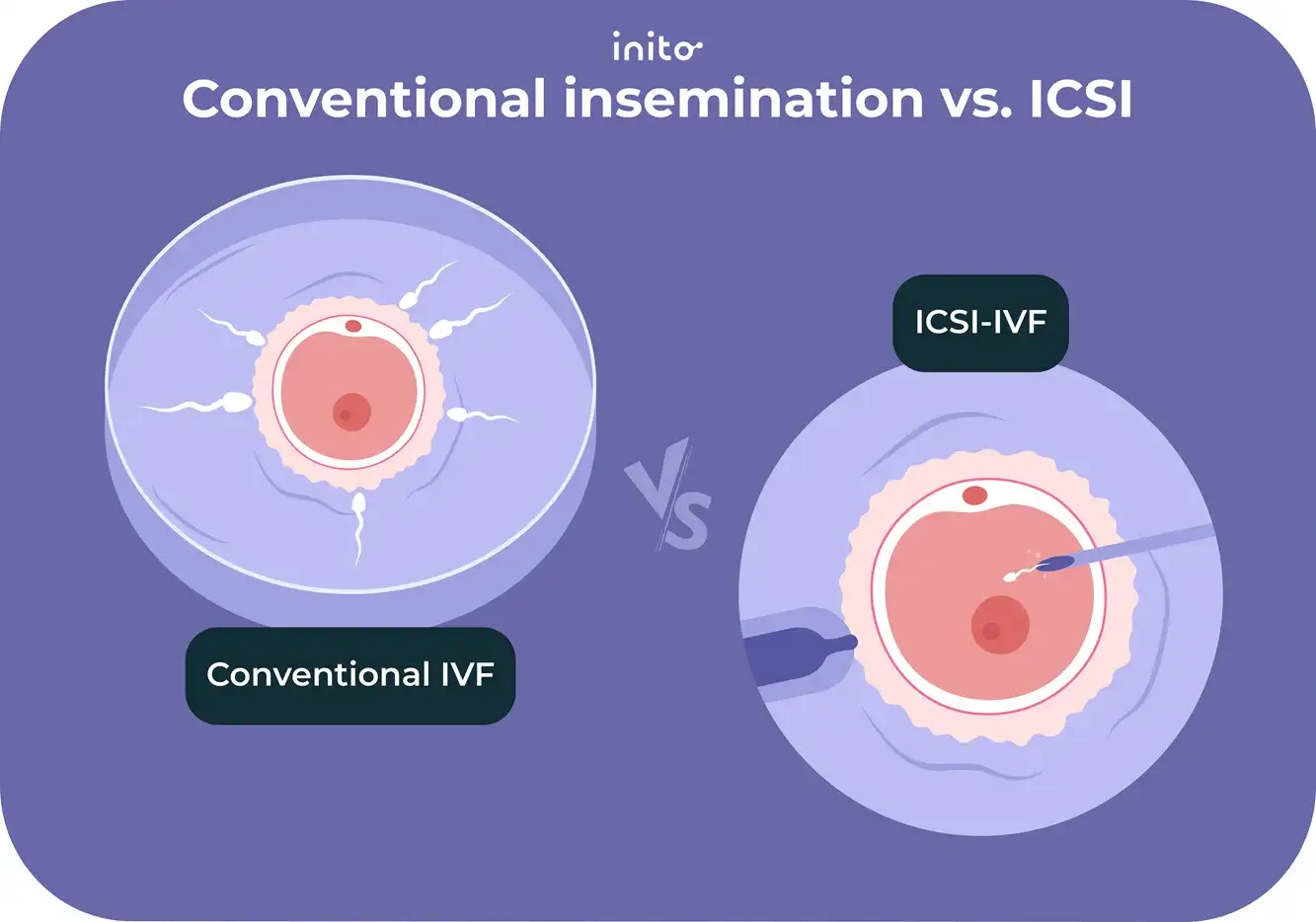
Embryo growth
An embryologist will keep an eye on the forming embryos for up to 3 or 5 days to monitor their development. Depending on what you and your specialist decide, you’ll use either a Day 3 embryo or a Day 5 embryo.
Read more: Day 3 vs. Day 5 Embryo Transfer
In some cases, you can also elect to have genetic testing done at this stage. Then the surviving embryos can either be frozen or prepped for transfer.
Embryo transfer
When ready, the fertility doctor will transfer the embryo (or embryos) into your uterus. This involves the doctor inserting a small catheter with the embryo and some fluid through your cervix into your uterus.
Read More: IVF Process: Your Step-by-Step Guide from Start to Finish
When should you consider IVF as a treatment option?
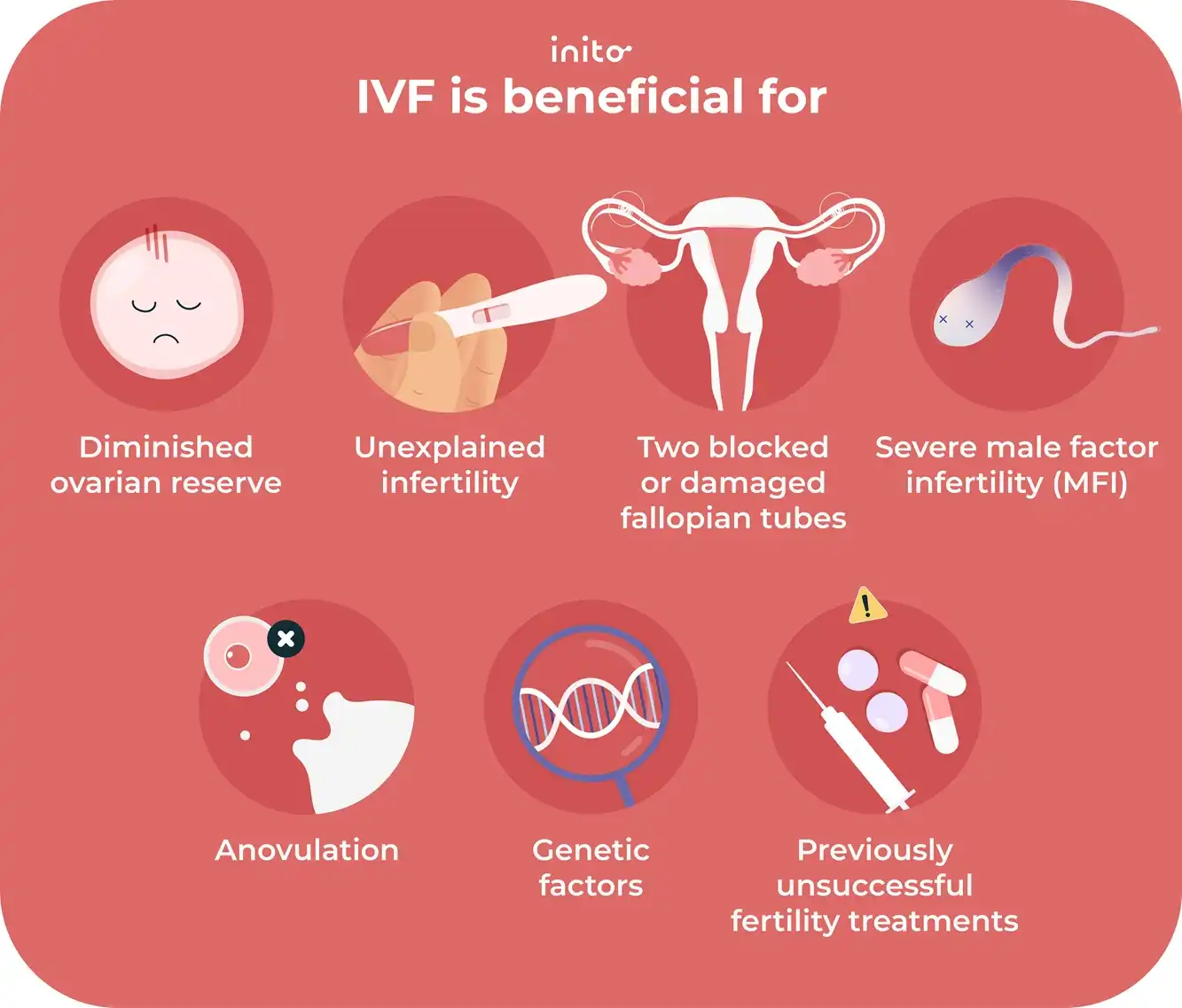
Here are the main cases in which IVF could be a fitting fertility option:
- Diminished ovarian reserve: IVF can benefit women with a low egg count or poor-quality eggs.
- Unexplained infertility: If you’re TTC but have unexplained infertility, IVF could help.
- Two blocked or damaged fallopian tubes: If only one fallopian tube is affected, IUI can be tried first. But if both fallopian tubes are compromised, IVF would be needed to conceive.
- Severe male factor infertility (MFI): IVF can help in more extreme cases of MFI.
- Anovulation: Women who do not regularly ovulate can benefit from IVF since the eggs are retrieved from the uterus.
- Genetic factors: If one or both partners have any genetic disorders they don’t want to pass on to their offspring, IVF is a good option.
- Previously unsuccessful fertility treatments: Those who haven’t had success with less invasive fertility treatments may find success with IVF.
Now you’ve seen who IUI and IVF are appropriate for, let’s see how they compare with success rates and more.
Comparing IUI vs. IVF at a glance
|
Factor to consider |
IUI |
IVF |
|
Success rate |
8.9 – 14.4% per cycle (depending on age) |
2.9 – 44.5% (depending on age) |
|
Cost per cycle |
A couple hundred dollars up to about $2,000 |
U.S. average found to be around $12,400 but could be up to $25,000 |
|
Time to pregnancy |
If pregnancy is achieved on the first or second IUI cycle, it could be quicker than IVF. If 3 or more cycles, it could be the same amount of time or longer than one cycle of IVF. |
Involves more steps than IUI, but since the success rate is higher, pregnancy could be achieved in fewer IVF rounds than IUI rounds. |
|
Side effects |
Depends on the medications used. |
The injectable gonadotropins that help with egg maturation can cause bloating, cramping, and headaches. |
|
Risk of multiples |
Clomiphene and letrozole increase the risk of ovulating more than one egg. This can increase the risk of multiples. |
Risk only increases if more than one embryo is transferred at a time. |
|
Invasiveness |
Less invasive |
More invasive |
As you can see, there are pros and cons to each of these fertility treatments. Curious to know more about each factor individually? Keep reading.
Success rate of IUI vs. IVF
Generally speaking, IVF has a much higher success rate than IUI. This is because, in an IUI cycle, the egg has to get fertilized and implant all on its own. But, in an IVF cycle, fertilization is supervised and controlled in a laboratory.
Let’s further examine the ins and outs of success for each treatment below.
IUI Success Rates
In any given cycle of IUI, the chance of achieving pregnancy is 10-15%. But after about 3 – 4 cycles of trying to conceive with IUI, the chances of pregnancy don’t change significantly. That’s why many patients seek other treatments after a few unsuccessful cycles of IUI.
Age plays a factor in IUI success rates too. In the table below, you’ll see the IUI success rate for various age groups.
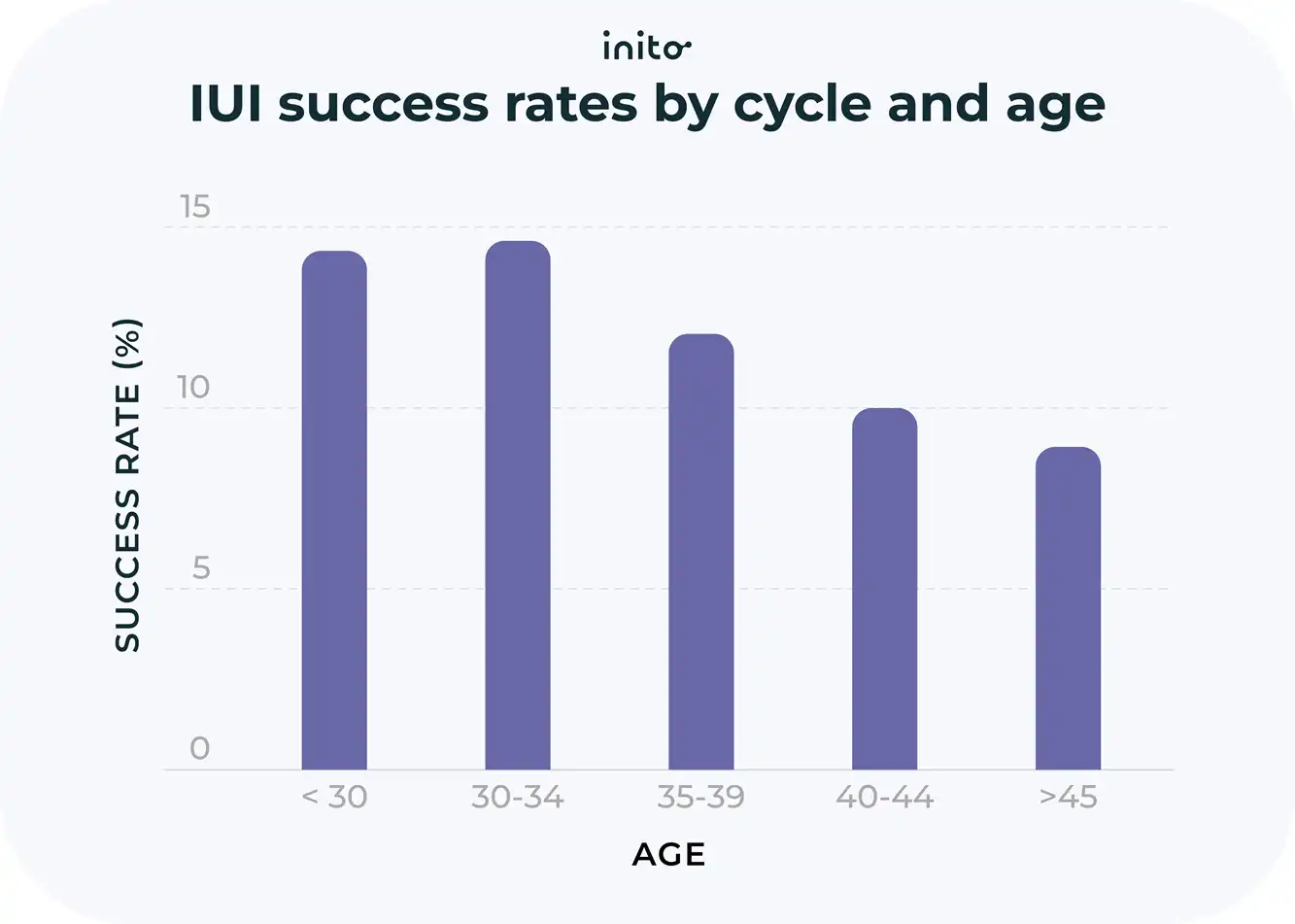
Age at the time of IUI (years) | Success rate (%) |
Younger than 30 | 14.4 |
30-34 | 14.5 |
35-39 | 12.6 |
40-44 | 10.0 |
45 or older | 8.9 |
As mentioned, the chances of conceiving via IVF are higher than conceiving through IUI. Below you’ll see the live birth rate for IVF based on each egg retrieval.
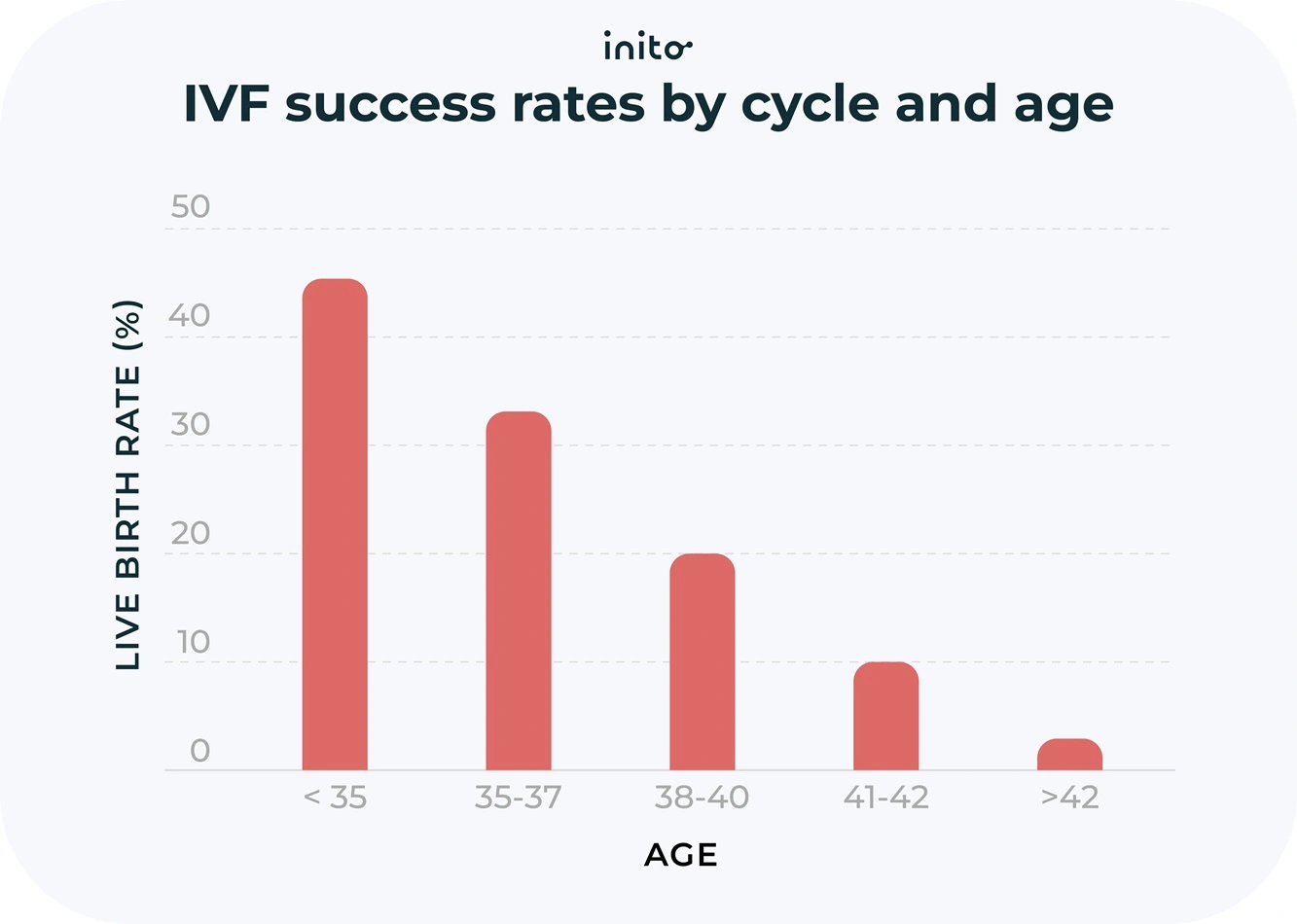
Age at the time of IVF (years) | Live birth rate (%) |
<35 | 44.5 |
35-37 | 32.4 |
38-40 | 20.2 |
41-42 | 9.6 |
>42 | 2.9 |
Just so you know! It’s important to understand that from one egg retrieval, you could go on to have one or more embryo transfers. It all depends on how many healthy eggs are collected from the egg retrieval and how many viable embryos develop.
Cost of IUI vs. IVF
The out-of-pocket expenses for IUI and IVF depend on a number of factors. Some of these include:
- The specific fertility clinic you go to
- Type of medication used
- The amount of follow-up necessary
- What your insurance plan covers
- If donor sperm or donor eggs are needed
One cycle of IUI typically costs up to $2,ooo, but it could be as low as a couple hundred dollars. IVF costs are much higher than this.
One study of IVF cycles in the U.S. found the average cost per cycle to be $12,400. But other studies suggest the cost could be as high as $20,000 to $25,000.
Side effects of IUI and IVF
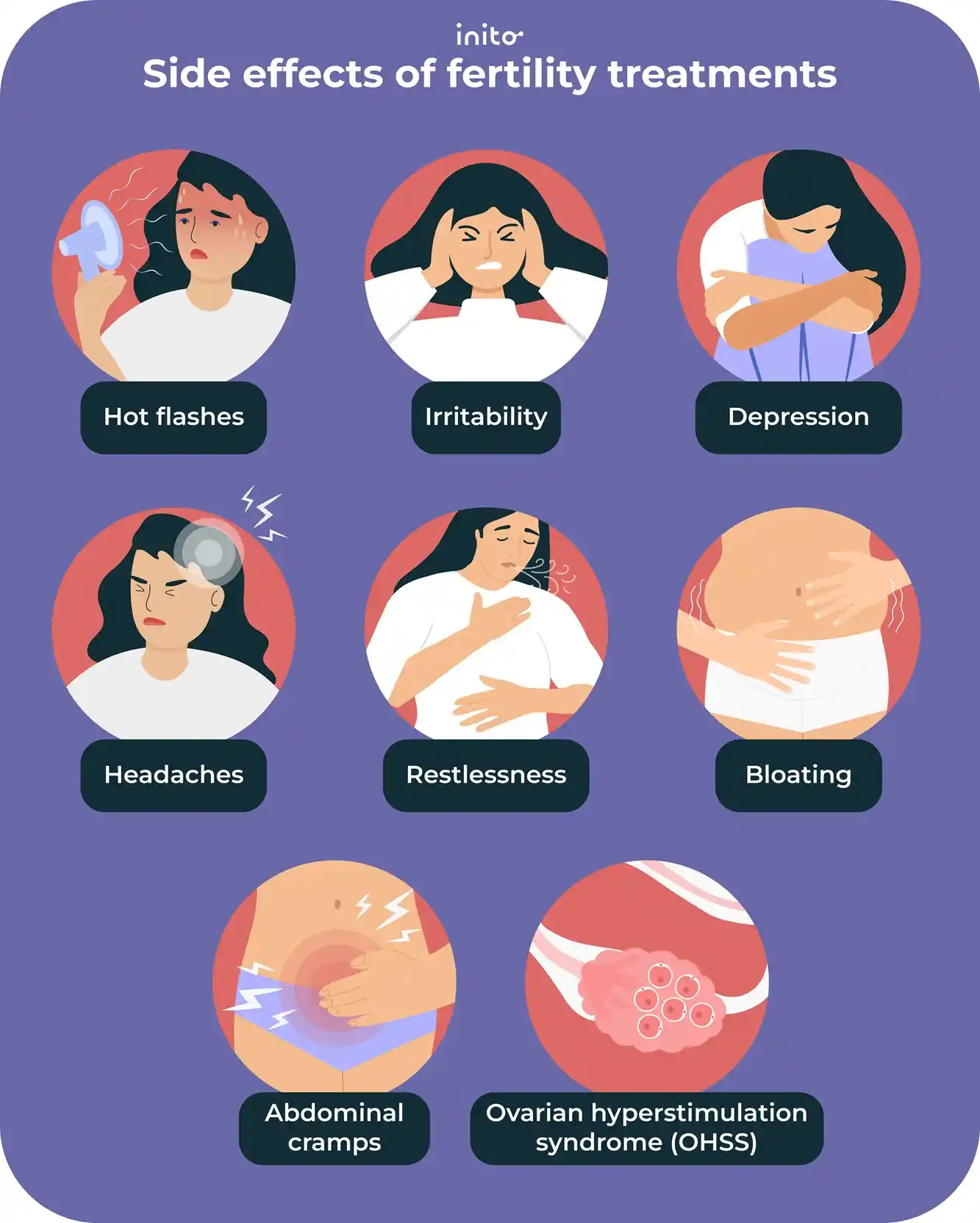
The side effects experienced largely depend on the medication used (if any). Some women undergoing IUI, won’t need any fertility drugs. In the case of an unmedicated IUI cycle, they likely won’t experience any side effects.
For medicated IUI cycles, mild side effects are possible when using clomiphene or letrozole. If gonadotropins are used, the chance of side effects is even higher.
In an IVF cycle, gonadotropins are used before the egg retrieval. This classification of drugs is known to cause symptoms like headaches, bloating, and cramping. They can even increase your risk of developing ovarian hyperstimulation syndrome (OHSS).
How long does it take to get pregnant with IUI vs. IVF?
It all depends on your unique situation and how responsive you are to each treatment. One cycle of IUI involves much less time than an IVF cycle. So if you conceive on your first IUI cycle, your time to having a baby is much shorter.
But since IUI success rates are lower, you could have to do up to three or more cycles of IUI to get pregnant. In this case, it’s possible that IVF would be quicker since the chances of conception in any given cycle are higher. Unfortunately, you can’t know for sure how long it will take to see success with either treatment. That’s why it’s best to talk to your fertility doctor about your specific circumstances.
What’s the risk of multiples with IUI and IVF?
An additional factor to consider with IUI and IVF is the rate of conceiving multiples. Carrying more than one baby increases the risk of certain complications for both the mother and the fetuses.
Now on its own, IUI does not directly affect your chance of conceiving multiples. The follicle stimulation medications, however, do increase your risk of multiples. This is because drugs such as gonadotropins, clomiphene, and letrozole increase the chance of ovulating more than one egg.
For IVF, your chances of having twins or multiples only increases if you transfer more than one embryo at a time. In a single embryo transfer, there’s no more risk than there would be in a natural cycle.
Which treatment is more invasive? IUI or IVF?
In vitro fertilization is definitely more invasive than IUI. With IVF, you’ll undergo many rounds of testing and fertility doctor visits before you even begin a cycle. Then, you’ll go through injections, ultrasounds, egg retrieval, and embryo transfer.
If ICSI is needed, the male partner will also have a procedure done to procure the semen sample.
Which is a better fertility option? IUI or IVF?
Neither option is necessarily “better” than the other. It simply depends on your unique medical history, fertility diagnosis, and preference.
To see which may be a better option for you, consider the chart below.
|
IUI is helpful in these cases… |
IVF is more useful in these cases… |
|
Sperm issues are only mild |
Poor egg quality (you can select the best ones or use donor eggs) |
|
You have at least one open fallopian tube |
Two blocked fallopian tubes |
|
Single women or lesbian couples |
Severe male factor infertility that would require ICSI |
|
Needing a more cost-effective option |
Those wanting preimplantation genetic testing or frozen embryos |
Clearly, there are a lot of factors to consider before electing to try IUI or IVF. Age, health, financial expenses, insurance coverage, and fertility diagnosis all play a part.
This is why discussing the best treatment plan with your fertility specialist is critical.
Takeaways
- IUI (intrauterine insemination) is when the sperm sample is inserted into the woman’s uterus.
- IVF (in-vitro fertilization) involves several stages of procedures and monitoring. These include ovarian stimulation, egg retrieval, fertilization, embryo growth, and embryo transfer.
- IUI tends to be used in mild cases of infertility or for single women and lesbian couples needing a sperm donor. IVF is a better option for those with more severe fertility challenges.
- IUI is less invasive and less expensive than IVF. But IVF has a higher success rate than IUI.
- Some side effects are possible for both IUI and IVF. These would most likely be from the use of gonadotropins. But clomiphene and letrozole (sometimes used in IUI) can cause mild side effects too.
- There are many factors to consider when choosing assisted reproductive technology to grow your family. Talk to your fertility doctor about your specific fertility goals and circumstances.
Was this article helpful?
- Sperm Transport – an overview | ScienceDirect Topics
- Effect of maternal and paternal age on pregnancy and miscarriage rates after intrauterine insemination
- SART – National Summary Report (2021)
- Impact of in vitro fertilization state mandates for third party insurance coverage in the United States: a review and critical assessment – PMC
- Success Rate of Inseminations Dependent on Maternal Age? An Analysis of 4246 Insemination Cycles




